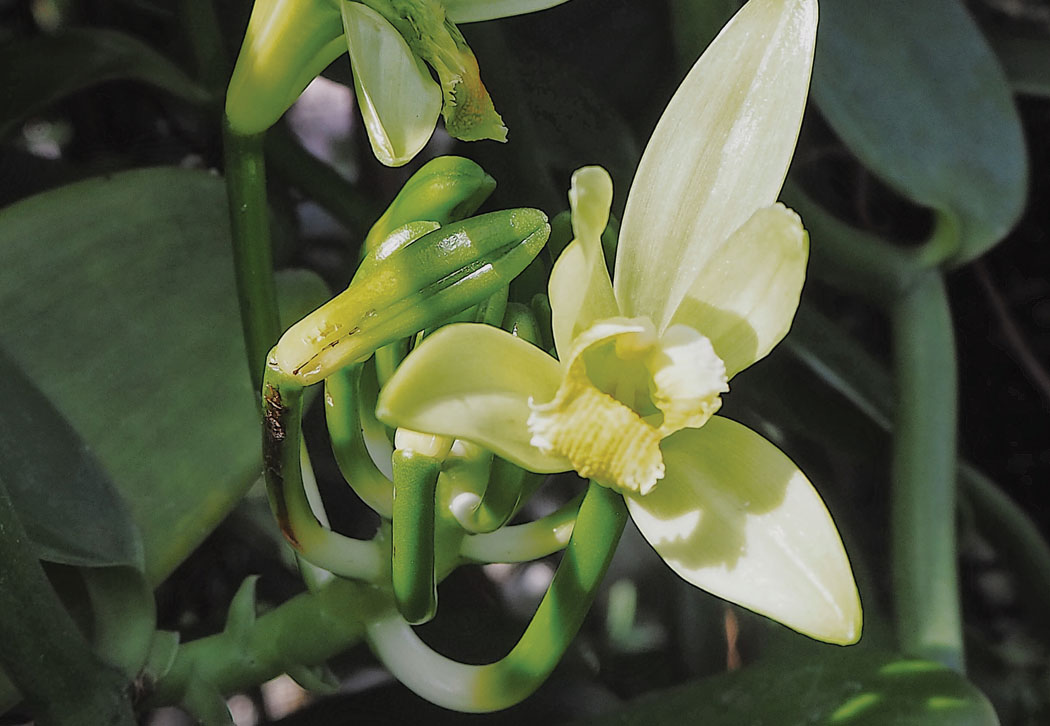
Recipe for Sweet Kabocha Soup: A Taste of History
By Brittany P. Anderson
As I stroll around the farmer’s market, a woman in front of me turns to her travelling companion, “Look, there’s a kabocha!” She pushes her sunhat back off her forehead to feast her eyes on the knobby green-mottled rind. Starstruck by the squash, she snaps a picture and as she moves on glances back over her shoulder cementing the experience in her mind.

Kabocha is a common name for several different varieties of pumpkin found here on Hawai‘i Island. Kabocha range from smooth light orange to deeply-lobed rough evergreen skin. Their coloration can be solid, speckled, or striped. Prized for its orange flesh rich in beta carotene, kabocha has been an important food source crossing cultures and centuries.
A team of archaeobiologists found squash seeds at a dry cave in Oaxaca, Mexico, providing evidence that agriculture in Mesoamerica started approximately 8000 years ago. They believe squash to be one of the first domesticated crops predating maize and beans in the early Americas. Scientists then compared seed sizes and structures, deducing the variety of squash seeds found in that cave to be Cucuribita pepo—the same genus as kabocha.
In the early 1800s, the first Portuguese immigrants began to arrive in Hawai‘i. Around 1832, skilled Mexican cattlemen came to Parker Ranch to teach cowboy techniques to local men. In the 1860s, Japanese immigrants arrived in Hawai‘i to work on sugarcane and pineapple plantations. These three cultures so deeply entwined in the history of kabocha converged on Hawai‘i Island within the same century, bringing with them a range of uses for this ancient squash.
Mainland chefs and culinary writers have helped bring kabocha to the masses. The increased awareness of farm to table and emphasis on heirloom seeds has seen a cross-cultural awareness—and celebrity status—of the tasty kabocha. The flesh of the kabocha has the consistency of sweet potato and is much sweeter than its jack-o-lantern cousin. For those who enjoy a steady supply of local kabocha, the praise and attention is of no surprise.
Kabocha squash are easily cultivated throughout the range of Hawai‘i Island climates. They are tolerant of heat, and resilient with sparse watering while still surviving in wetter areas. The vines stretch outwards, climbing where they can. Large yellow flowers are male or female. The female flowers will show a small bulbous premature squash that, if everything goes well, will turn into a pumpkin.
Once picked, the kabocha should be stored for at least two weeks to allow flavor and sweetness to develop. In speaking with several Thai farmers, they report to ripening kabocha for two weeks in a warm area and then moving the pumpkins to a cold area for a month for optimum flavor. Some even report that pumpkins picked in late summer or early fall are the sweetest.
I pick up the immortalized bumpy green kabocha and turn it ‘round in my hands. Its thick skin tells the story of generations, crossing the world to an island in the Pacific. The kabocha is weighed and I tuck it into the bottom of my bag.
Sweet Kabocha Soup

About 2 lb kabocha, skinned and roughly chopped
1 small white onion, roughly chopped
2 cups unsweetened coconut milk
1/2 cup honey
1 vanilla bean, split
1 tbs unsalted butter
Cinnamon and salt to taste
In a small stock pot, sauté onion over medium heat in butter until translucent and the edges are slightly browned. Add kabocha, coconut milk, honey, and vanilla bean. Bring to a simmer and decrease heat to low, stirring occasionally. Cook until pumpkin is very soft. Remove vanilla bean. Puree with blender. Season with sea salt and a dash of cinnamon. Enjoy! ❖


